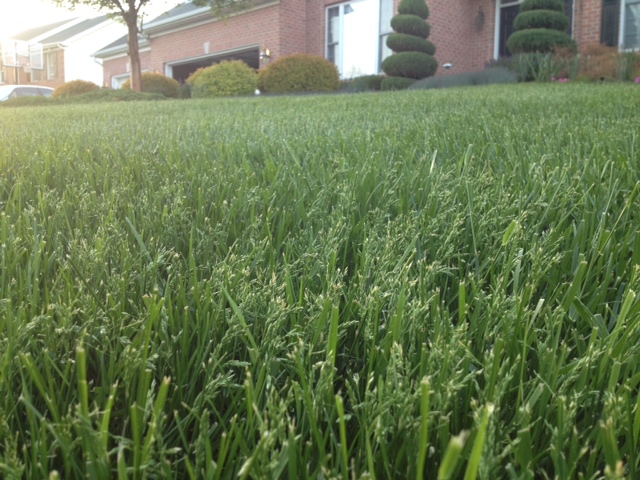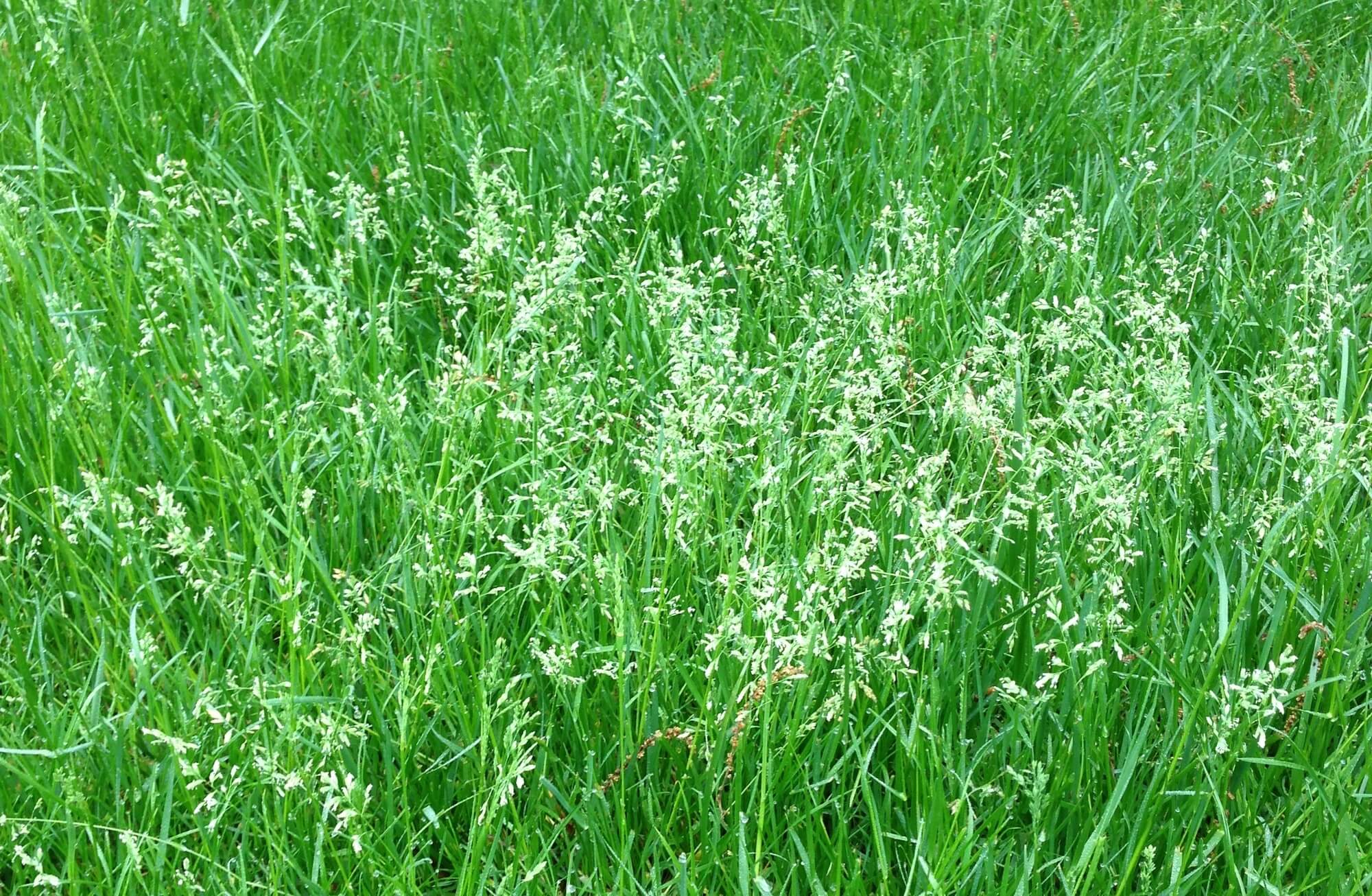If you look closely at your lawn this time of year, you may think it is full of weeds. But in reality, it could be a natural phenomenon that occurs in many turfgrasses in the spring called inflorescence – or flowering and seedhead production. Unfortunately, an abundance of seedheads can make a lawn look unattractive and the physiological effects on turf plants may temporarily reduce overall turf quality. And if you are sneezing a lot after walking on your lawn, you could be allergic to grass pollen, which comes from these and other grass seedheads in May.

Seed production takes energy away from the plant and may cause turf blades to become sparse and off-colored. The seed stalks have fewer leaf blades and their woody structure resists mowing which adds to the eyesore. Sharpening mower blades can help. The seed production is seldom consistent throughout a home lawn and it sometimes occurs in patches. Thus, the problem is often made more obvious by patches of seedheads occurring in an otherwise smooth, dark green lawn.
 Turfgrass seed heads usually begin to form below the recommended mowing height of 3″ – 3 1/2″ for home lawns. The seed heads will still develop despite frequent mowing. However, you should NOT lower the mowing height in an attempt to remove all of them as they are a short-lived aesthetic problem; they do not cause long-term damage to turf plants. The stress produced by low-mowing can cause long-term injury to turf plants.
Turfgrass seed heads usually begin to form below the recommended mowing height of 3″ – 3 1/2″ for home lawns. The seed heads will still develop despite frequent mowing. However, you should NOT lower the mowing height in an attempt to remove all of them as they are a short-lived aesthetic problem; they do not cause long-term damage to turf plants. The stress produced by low-mowing can cause long-term injury to turf plants.
Frequent mowing will not prevent seed development, however, infrequent mowing will allow seed heads to fully develop and make the problem worse. Note that the seeds that would develop on hybrid turfgrasses used in home lawn would not be viable seed. Thankfully, the unsightly seedheads and stalks will eventually disappear on their own by early June allowing Maryland lawns to return to an aesthetically appealing uniformly green carpet.

